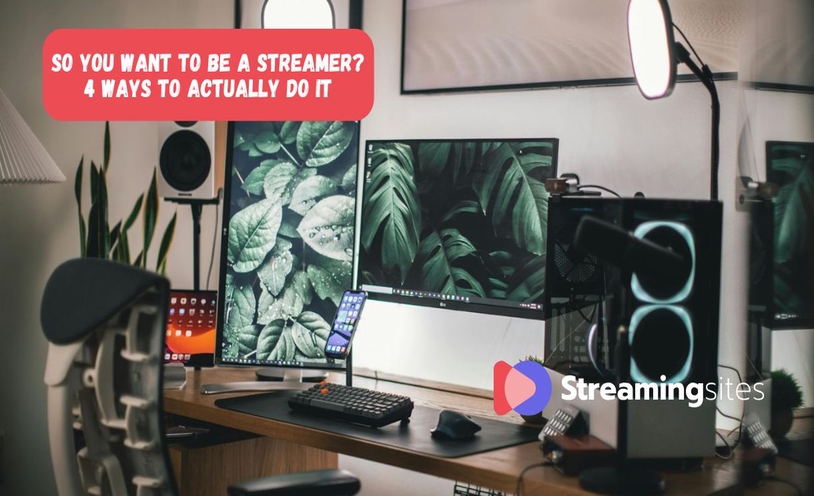
So You Want to Be a Streamer? 4 Ways to Actually Do It
The idea of being a streamer is incredibly appealing. You get to share what you love with a live audience, build a community, and maybe even turn your passion into a career. It looks easy from the outside: just turn on a camera and play some games. But like any craft, there’s a lot more to it than meets the eye. Success isn't about having the most expensive setup or being the best player. It's about finding your voice, connecting with people, and showing up consistently.
Becoming a streamer is a marathon, not a sprint. It takes dedication and a bit of a plan. Here are five fundamental steps to get you started on your journey from viewer to creator.
The first question every aspiring streamer needs to answer is: "What am I going to stream?" The obvious answer for many is video games, but even that is incredibly broad. You need to find a niche. Are you a tactical genius in FPS games like VALORANT? Or maybe you prefer the deep storytelling of single-player RPGs. Your choice of game will define your initial audience.
But you don't have to be limited to traditional gaming. The most successful streamers build a brand around their personality, and they can stream almost anything.
Consider other avenues:
The key is to pick something you are genuinely passionate about. Your enthusiasm is infectious, and it's what will keep viewers coming back.
You do not need a multi-thousand-dollar studio to start streaming. In fact, it's better to start small and upgrade as you grow. The three essential pieces of equipment are a decent microphone, a webcam, and stable internet.
Your audio quality is arguably more important than your video quality. Viewers will tolerate a grainy webcam, but they will click away instantly if they can't hear you clearly. A good USB microphone is a fantastic starting point. As for a camera, the one built into your laptop or even your phone can work when you're just starting out.
Overall, the focus should be on creating a clean and clear broadcast, not a Hollywood production.
Once you have your gear, you need to decide where you'll be broadcasting. The main players are Twitch and YouTube, each with its own culture and discovery tools. It's worth spending some time on each platform as a viewer to see which one feels like a better fit for the content you want to create.
At the same time, start thinking about your brand. This includes your streamer name, your logo, and the visual elements of your stream like overlays and alerts. You want to create a consistent and recognizable identity. This doesn't have to be complicated at first, but having a clear brand helps you stand out and look professional from day one.
Beyond just being live, you have to engage. Streaming is a two-way conversation. Read your chat, respond to questions, and thank people for following and subscribing. Make people feel seen. Your first viewers are your founding members; they are the people who will help you build your community from the ground up.
Social media is also a powerful tool for this. It's a point heavily emphasized by streaming platforms themselves; Twitch’s official Creator Camp offers guides on how a strong community is built outside of live hours. Use platforms like X (formerly Twitter) or Discord to interact with your audience when you're offline, sharing clips, asking questions, and creating a space for your community to connect with each other.